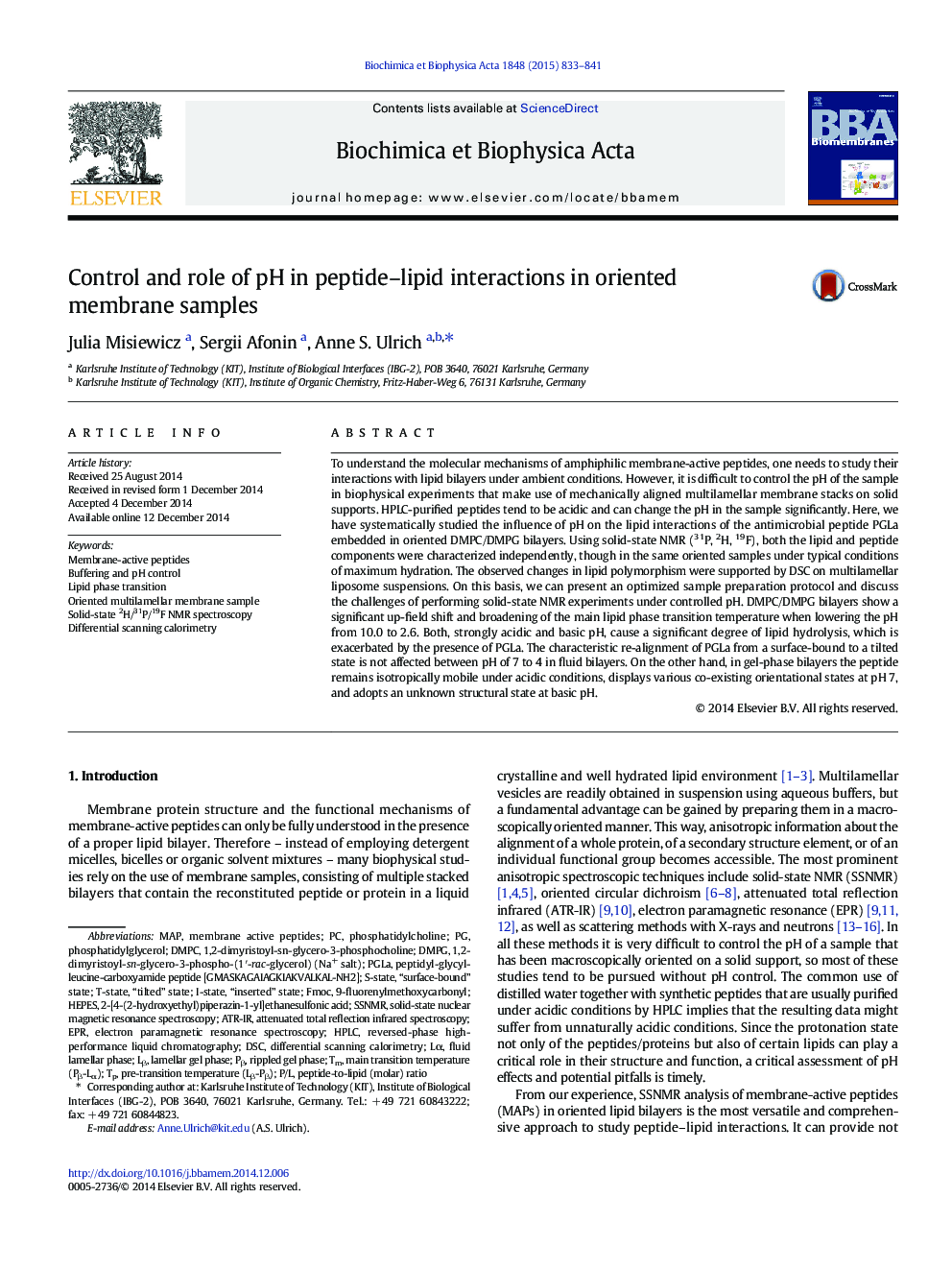| کد مقاله | کد نشریه | سال انتشار | مقاله انگلیسی | نسخه تمام متن |
|---|---|---|---|---|
| 1944037 | 1053174 | 2015 | 9 صفحه PDF | دانلود رایگان |

• pH control of the sample is difficult in studies with oriented membranes.
• Acidic and basic pH can cause lipid hydrolysis and affect polymorphism.
• The known re-alignment of cationic PGLa was confirmed for pH 4–7.
• Peptide orientation at extreme pH was different in the lipid gel phase.
• A protocol for pH control in oriented membrane samples is suggested.
To understand the molecular mechanisms of amphiphilic membrane-active peptides, one needs to study their interactions with lipid bilayers under ambient conditions. However, it is difficult to control the pH of the sample in biophysical experiments that make use of mechanically aligned multilamellar membrane stacks on solid supports. HPLC-purified peptides tend to be acidic and can change the pH in the sample significantly. Here, we have systematically studied the influence of pH on the lipid interactions of the antimicrobial peptide PGLa embedded in oriented DMPC/DMPG bilayers. Using solid-state NMR (31P, 2H, 19F), both the lipid and peptide components were characterized independently, though in the same oriented samples under typical conditions of maximum hydration. The observed changes in lipid polymorphism were supported by DSC on multilamellar liposome suspensions. On this basis, we can present an optimized sample preparation protocol and discuss the challenges of performing solid-state NMR experiments under controlled pH. DMPC/DMPG bilayers show a significant up-field shift and broadening of the main lipid phase transition temperature when lowering the pH from 10.0 to 2.6. Both, strongly acidic and basic pH, cause a significant degree of lipid hydrolysis, which is exacerbated by the presence of PGLa. The characteristic re-alignment of PGLa from a surface-bound to a tilted state is not affected between pH of 7 to 4 in fluid bilayers. On the other hand, in gel-phase bilayers the peptide remains isotropically mobile under acidic conditions, displays various co-existing orientational states at pH 7, and adopts an unknown structural state at basic pH.
Figure optionsDownload high-quality image (151 K)Download as PowerPoint slide
Journal: Biochimica et Biophysica Acta (BBA) - Biomembranes - Volume 1848, Issue 3, March 2015, Pages 833–841